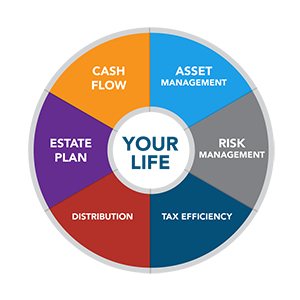
You want to maximize the growth potential of your 401k plan. To do this, you will need to know the best ways to invest your funds. A 401k calculator is a great tool to assist you in this task. This calculator will provide you with information about a variety of factors including the amount you should contribute, employer match and the rate at which your contributions return.
Contribution percentage of 401k
In 2018, the average American contributed to their 401k plan, or IRA, of almost 8.6%. While the percentage varies among workers, full-time employees are more likely to contribute than part-time employees. The US will have $37.2 trillion in retirement assets by 2020. That's 33% more than total household equity. The average 401k balance at retirement will be around $93,000. Baby Boomers as well as Generation X have the highest levels of savings. The generational Z generation was the least active saver, saving only two percent of their incomes in their working years.
Contributions to the 401k account must not exceed 9% your gross salary. For those 50 and older, you might be able make a catch-up contribution in order to make up lost time. This contribution will depend on your retirement goals, lifestyle, and the needs of your family. Consider taking advantage of the company's match. Employers often match up to 50% the first six percent.
401k employer match
The easiest way to figure out how much you could contribute to your plan's 401k employer matching calculator is to use it. For example, if your annual income is $50,000, your employer can match up to six per cent of your contributions. Your total contribution would amount to $9,000 This would equal a 50% match or $4,500. It would be tax-deductible. You can calculate the matching amount for your plan by using an online calculator.

Employer match amounts can vary from employer to employer. Some employers match 100% while others match less. You should know the amount your employer will match to be able to plan accordingly. A typical employer match percentage will be 2% of your salary. A 3% match will mean that your employer will match the dollar amount you make. Understanding the match amounts will help you to save the right amount for retirement.
Fifty-one percent of 401k withdrawals
There may be a variety options available to you regarding the frequency of your withdrawals from your 401k plan. You can choose to withdraw from the account weekly, monthly, and/or quarterly. To account for inflation, you can adjust the withdrawal frequency. The Consumer Price Index is a gauge of inflation in the United States. CPI has averaged 2.9% annually over the past 40 years. In 2021, CPI is expected to average 6.8% annually.
According to the Plan Sponsor Council of America, two-thirds of large plans that offer 401(k), allow for regular withdrawals upon retirement. While this may seem like an inconvenient feature, it has a clear advantage: it enables you to take money from your account without taxation penalties.
Rate of return on 401k contributions
The rate of return on 401k contributions is an important calculation to make when investing for retirement. The higher your average return, the more consistent you are with your contributions over time. You should consider your risk tolerance, as well as how much you are willing to lose if markets move too far. You need to think about your asset allocation. It may be more conservative, or more aggressive, depending upon your goals.
The market environment and overall investment portfolio are directly related to the rate at which 401k contributions return. With proper asset allocation, 401k contributions can earn anywhere between 3% and 8 percent annually. Different assets offer different returns and risk. For instance, investments with higher risk may not be as lucrative as stocks or bonds.

Required minimum distribution from 401k
The Required Minimum Distribution is the amount of money required to be withdrawn from retirement accounts in order for tax obligations to be met. This amount can either be taken from an employer sponsored retirement plan, a traditional IRA (or a SIMPLE or SEP IRA). The RMD age has increased from 70 1/2 years old to 72 in 2020. This means that if your age is in your 40s or 50s you will need to withdraw the money now.
The required minimum distribution amount is set by the IRS and is based on life expectancy. You may be able to withdraw more than the minimum amount. This is legal, but could result in a shocking tax bill. Roth IRAs, which are intended for individuals who plan to retire while still working, do not have to be subject to this requirement.
FAQ
What are some of the different types of investments that can be used to build wealth?
There are many different types of investments you can make to build wealth. Here are some examples:
-
Stocks & Bonds
-
Mutual Funds
-
Real Estate
-
Gold
-
Other Assets
Each one has its pros and cons. Stocks and bonds, for example, are simple to understand and manage. However, they tend to fluctuate in value over time and require active management. However, real estate tends be more stable than mutual funds and gold.
It all comes down to finding something that works for you. It is important to determine your risk tolerance, your income requirements, as well as your investment objectives.
Once you have made your decision on the type of asset that you wish to invest in, it is time to talk to a wealth management professional or financial planner to help you choose the right one.
What are the potential benefits of wealth management
Wealth management offers the advantage that you can access financial services at any hour. To save for your future, you don't have to wait until retirement. You can also save money for the future by doing this.
You have the option to diversify your investments to make the most of your money.
For instance, you could invest your money into shares or bonds to earn interest. To increase your income, property could be purchased.
A wealth manager will take care of your money if you choose to use them. You won't need to worry about making sure your investments are safe.
What is retirement planning?
Retirement planning is an essential part of financial planning. This helps you plan for the future and create a plan that will allow you to retire comfortably.
Retirement planning is about looking at the many options available to one, such as investing in stocks and bonds, life insurance and tax-avantaged accounts.
How to Begin Your Search for A Wealth Management Service
You should look for a service that can manage wealth.
-
Can demonstrate a track record of success
-
Locally located
-
Offers complimentary initial consultations
-
Provides ongoing support
-
There is a clear pricing structure
-
Reputation is excellent
-
It is easy and simple to contact
-
We offer 24/7 customer service
-
Offers a variety products
-
Low charges
-
Do not charge hidden fees
-
Doesn't require large upfront deposits
-
A clear plan for your finances
-
Is transparent in how you manage your money
-
Allows you to easily ask questions
-
Does your current situation require a solid understanding
-
Understand your goals & objectives
-
Is open to regular collaboration
-
Works within your financial budget
-
A good knowledge of the local market
-
We are willing to offer our advice and suggestions on how to improve your portfolio.
-
Will you be able to set realistic expectations
Statistics
- As previously mentioned, according to a 2017 study, stocks were found to be a highly successful investment, with the rate of return averaging around seven percent. (fortunebuilders.com)
- Newer, fully-automated Roboadvisor platforms intended as wealth management tools for ordinary individuals often charge far less than 1% per year of AUM and come with low minimum account balances to get started. (investopedia.com)
- According to a 2017 study, the average rate of return for real estate over a roughly 150-year period was around eight percent. (fortunebuilders.com)
- A recent survey of financial advisors finds the median advisory fee (up to $1 million AUM) is just around 1%.1 (investopedia.com)
External Links
How To
How do you become a Wealth Advisor
You can build your career as a wealth advisor if you are interested in investing and financial services. This job has many potential opportunities and requires many skills. These qualities are necessary to get a job. Wealth advisors have the main responsibility of providing advice to individuals who invest money and make financial decisions based on that advice.
The right training course is essential to become a wealth advisor. The course should cover topics such as personal finance and tax law. It also need to include legal aspects of investing management. Once you've completed the course successfully, your license can be applied to become a wealth advisor.
Here are some tips to help you become a wealth adviser:
-
First, you must understand what a wealth adviser does.
-
Learn all about the securities market laws.
-
It is essential to understand the basics of tax and accounting.
-
You should take practice exams after you have completed your education.
-
Finally, you will need to register on the official site of the state where your residence is located.
-
Get a work license
-
Send clients your business card.
-
Start working!
Wealth advisors can expect to earn between $40k-60k a year.
The location and size of the firm will impact the salary. The best firms will offer you the highest income based on your abilities and experience.
Summarising, we can say wealth advisors play an essential role in our economy. Everybody should know their rights and responsibilities. Moreover, they should know how to protect themselves from fraud and illegal activities.